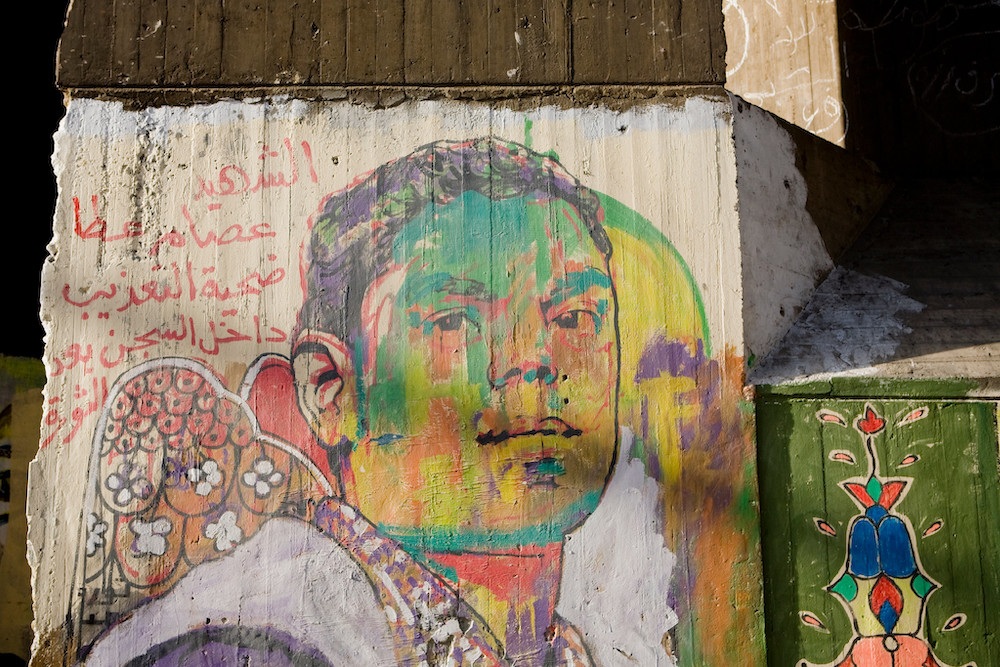Comics and Comix in Egypt: An Interview on Teaching With Arabic Literature
Posted on June 18, 2018

I can trace my interest in graphic literature directly to my experience at the Center for Arabic Study Abroad (CASA) in Cairo. During my 2011-2012 fellowship, I watched as the iconic graffiti in and around Tahrir Square came to life: the Mohammed Mahmoud Wall of Martyrs, the Sheikh Rehan Street optical illusion, the hydra-headed Mubarak-Tantawi-Morsi monster. . . My first and forever impressions of Cairo are in fact tied to the visual poetics that I saw emerging during that turbulent and artistically effervescent time.
Michal Raizen, Assistant Professor of Comparative Literature at Ohio Wesleyan University, recently spoke with M. Lynx Qualey of the website Arabic Literature (in English) about understanding and teaching Arabic literature through graphic art. Raizen was surprised to find that many of her students already had a rich vocabulary for discussing work that combined text and visuals, including "what was innovative (or not innovative)" about them.
However, students may not yet have all the language they need ---they often begin the class by asking Raizen to explain the difference between comics and comix. (A Time magazine article offers a simple definition: comix are a "subgenre of black-and-white, adult-oriented, 'underground' comic books," which first appeared in the 1960's T ---Ed.s).
To help students gain additional vocabulary and background, Raizen highly recommends Scott McCloud's classic Understanding Comics. To understand Arabic graphic literature, in particular, students might explore the resources on Khallina, a site that aims to help teachers of Arabic at the high school and college levels incorporate teaching materials built around aspects of Arab culture, in their curriculum.
Raizen's course, “Graphic and Experimental Novels of the Contemporary Middle East,” connects street art, graphic literature, Internet memes, and novels that depict "the iconography of protest and resistance," such as Radwa Ashour’s The Woman from Tantoura. To contextualize this diverse content, Raizen includes some traditional lectures, PowerPoints with maps, photographs, and images of recurring symbols. Then, she has students compare informational images with graphic depictions:
[P]hotographs of the wall [between the Palestinian territories and Israel] give students an idea of scale, landscape, and checkpoints, but Abdelrazaq’s “The Occupation,” an image of the wall as a gaping maw with teeth, gives students a sense of the despair and insurmountable nature of the situation… The most impactful learning definitely happens in the comparison.
In tackling work from Egypt, Raizen uses Jonathan Gruyer's short essay, "CairoComix: Excavating the political", which is available for free online. She also connects contemporary Egyptian comix to American youth counterculture, beginning with the 1960's and Zap magazine. In the first weeks of class, she encourages students to explore the texts on their own terms, and to reflect on their responses:
I open our discussions by asking how they read. Do they look at the images first? Do their eyes move from panel to panel or skip around? Do they focus on the text boxes and then look at the images? What are the challenges? What is enjoyable or relatable about a certain work?
Interested in getting started? WWB has published a graphic pamphlet used by protesters in Egypt's 2011 revolution, as well as a range of graphic fiction from Egypt, all complete with contextual materials and teaching ideas.



